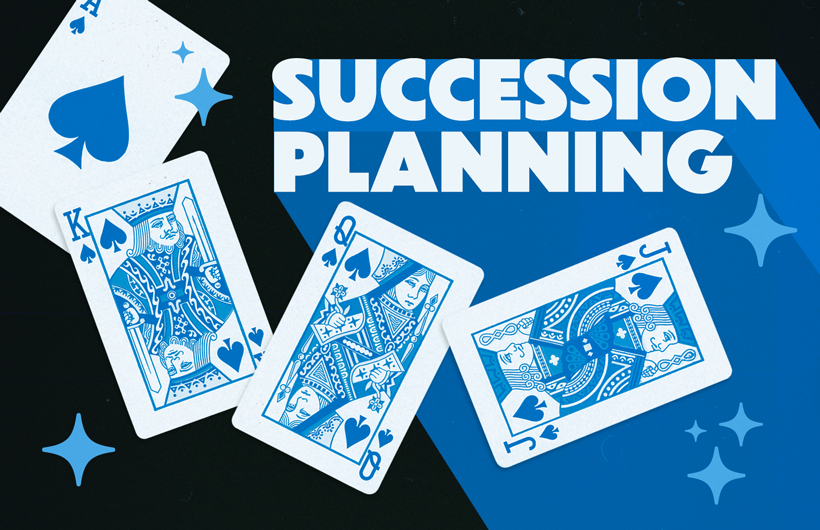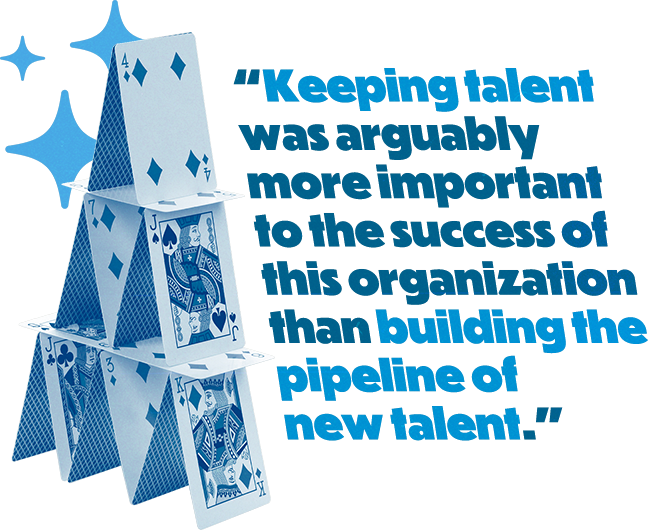Succession Planning - Part 1: Why
By Jeff Insco, UPBrand Founding Partner [President 2010-2023]

Why Succession Planning Matters To All Teams
After more than 30 years in the advertising agency business and now as an empty-nester, I’ve been thinking a lot about what might be next for the industry, our clients, my agency and numero uno. I’m grateful and relieved to say I’m as excited and confident as ever about what’s ahead. An epiphany a while back inspired action that has resulted in my current positive mojo. Several years ago, I came to a startling realization after poking my head up and out of my business that I had better begin putting things in place for what happens after what comes next (thank you Watts Wacker, RIP).If Jeff gets hit by a bus, then what? Or, how do I help the company live into our vision when my energy level or motivation or relevance wane?
My revelation clarified the importance of this priority, which is easy to back-burner but is one of the most important long-term strategies you can facilitate to secure the future of your team or organization. It’s about succession. No, not orchestrating a bloodlust pursuit of your enviable position or assets. It’s about ensuring the SUCCESS you’re working so hard to create endures. That’s why it is called “succession planning.”Having heard the phrase used at some of our larger client organizations, and seeing the concept in practice when benchmarking Baldrige Award winning companies, it wasn’t a completely foreign idea to me, but it just didn’t seem all that relevant to our small but growing strategy and creative agency. Then my epiphany happened...
Better Solutions & Business Outcomes
Succession planning is a hallmark of world-class organizations for several reasons. Net: having highly engaged talent leads to better solutions and business outcomes.
When team members aren’t buried in their brain stems out of fear or frustration with ambiguity about their careers, they invest more of themselves.
Great talent is motivated by seeing a path ahead of them. As a coach once said to me, in the absence of information people tend to make up bad things. (Pro tip: get an executive coach - and possibly a therapist - to help you sort through your thoughts and hold you accountable to action plans. But I digress). So, the clearer you can outline career paths and reduce stress, the more relaxed and committed you find great talent to be.
Studies show a more engaged workforce leads to higher productivity and profitability, and faster, greater innovation.
Retention is a Critical Success Factor
During a recent employer branding assignment, we discovered the harsh realities of attrition. Initially, we believed our efforts would focus on attracting talent to the client organization because of the need to fill so many openings.
Our discovery revealed the hard costs of replacing talent averaged around $30K per person depending on the role within that organization. This, as it turns out for this client, was a multi-million dollar problem (as in tens of millions) because employees were leaving as fast as they could hire new ones.

Keeping talent was arguably more important to the success of this organization than building the pipeline of new talent. Attracting and keeping customers is central to business’s purpose. That’s awfully hard to do when talent’s walking out the door.
Succession planning represents a key solution here because it involves creating a future plan for people that includes their training and development.
A recent LinkedIn study showed that 94% of employees said development opportunities would keep them in their roles. Also revealed, talent is 3.5 times more likely to be engaged when they experience “internal mobility,” and they stay with the company almost twice as long (5.4 years vs. 2.9).
So, yeah, succession planning is for all types and sizes of teams… not just reserved for the C-suite… because it can result in higher retention of talent AND customers.
Leadership Continuity Protects & Enhances The Secret Sauce
When key people walk out the door, too often key customers do as well. We’ve all heard it’s all about relationships, right?
And, there’s a hard-to-quantify cost of screwing up your culture. Even a little bit of people-churn can create major fluctuations in your culture unless you’re solidly grounded in shared values (a blog post for another time). Point is, leadership continuity is critical in protecting and nurturing the culture that makes your organization unique.

A landmark study from the up-and-comers at Harvard, presented data that showed leadership developed from within drives greater success in situations where a major pivot is NOT required. In other words, if you want to continue or expand upon current success, develop leaders from within. Scenarios where major changes in culture or business strategy are required may be better suited to bringing in outside leadership.
Clarity Reduces Your Anxiety
Perhaps the most difficult to quantify, but possibly the most important thing to realize, is that a sound succession planning initiative can greatly reduce the anxiety of leaders… especially THE leader.
A defined process forces you to decide upon what’s next for you and likewise, what that means to your closest colleagues. In the end, that clarity has a way of bringing more peace to the hustle required in a leader’s day job. You know where you’re headed. Your key people know where they’re headed. It’s more fulfilling running toward a unified goal rather than running from something.
More on how to do succession planning in my next post. In the meantime, I welcome your contributions to this dialogue. What succession concerns are you facing? What tactics have you seen applied successfully? What’s standing in your way of starting your succession plan today?
Note: Crafted in its entirety by humans.
